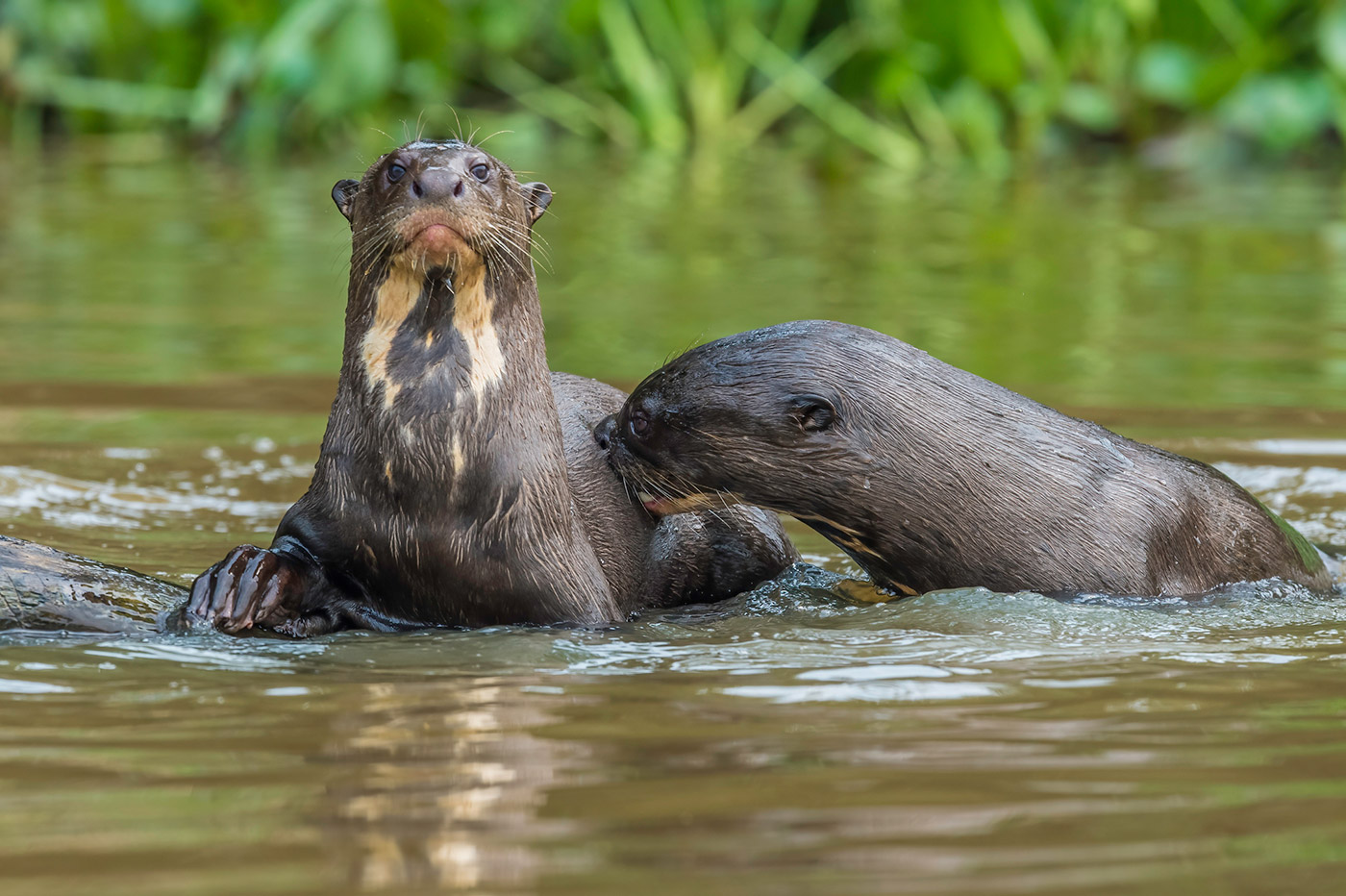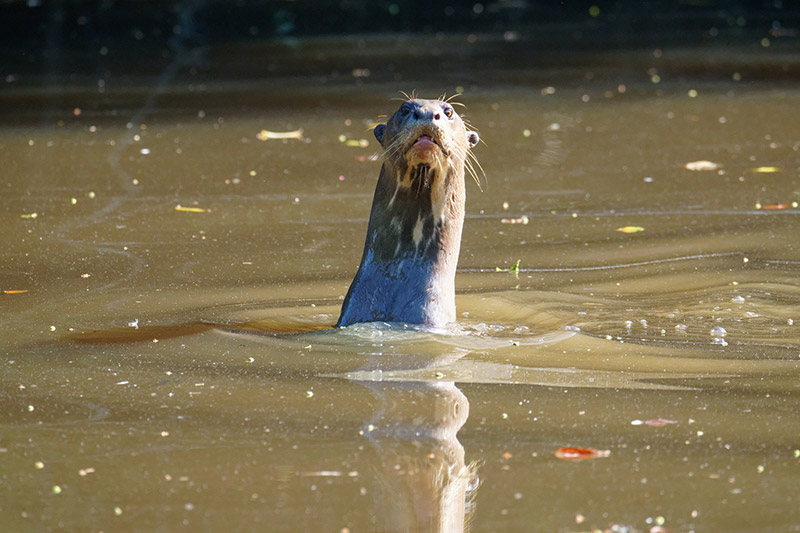Giant otter
(Pteronura brasiliensis)

South America in The Amazon and Orinoco River Systems and the Pantanal, the world’s largest tropical wetland.
With only a few thousand of us left in the wild, our biggest populations are in the Guianas and the Peruvian Amazon, especially in the Alto Purús National Park.
About me
They call us the “giant river otter” because we’re some of the biggest mustelids: you know, like weasels, otters, and even wolverines. Measured from tail to snout, we could get up to human height! We’re also some of the chattiest members of our family — we growl, scream, bark, whistle, squeak, and sing, depending on the situation.
Unfortunately, our friendliness and ability to approach humans without fear has made us even more vulnerable to poaching, hunting, and conflict with fishermen — who think we’re annoying because we like the same fish…

Fast Facts: Did you know?
In Brazil, we’re known as ariranha, meaning “water jaguar” in the indigenous Tupi language. Our Portuguese name carries the same meaning! Onça-d'água means “jaguar of the water.” Pretty cool, huh?
We’re very family oriented, living in tight groups and helping build dens where mothers give birth. When they do, we all help out in raising the pups: moms, dads, and siblings alike. We protect them, feed them, and teach them how to fish.
The rainforests of the Amazon, Congo, and Indonesia are our last best line of defense against the biodiversity and climate crisis. But 17 corporations are making massive profits by driving their destruction and the violation of human rights. That has to end NOW.
Why I want to Keep Forests Standing
The wild population of giant river otters is under serious threat! It used to be that poaching and hunting were the main problems, dooming us to near extinction, but now it’s mining and logging. Vegetation clearing and habitat destruction alongside our river homes isolates us and makes it hard to make family groups, and mining contaminates the water — including the fish that we eat.



 South America in The Amazon and Orinoco River Systems and the Pantanal, the world’s largest tropical wetland.
South America in The Amazon and Orinoco River Systems and the Pantanal, the world’s largest tropical wetland.










